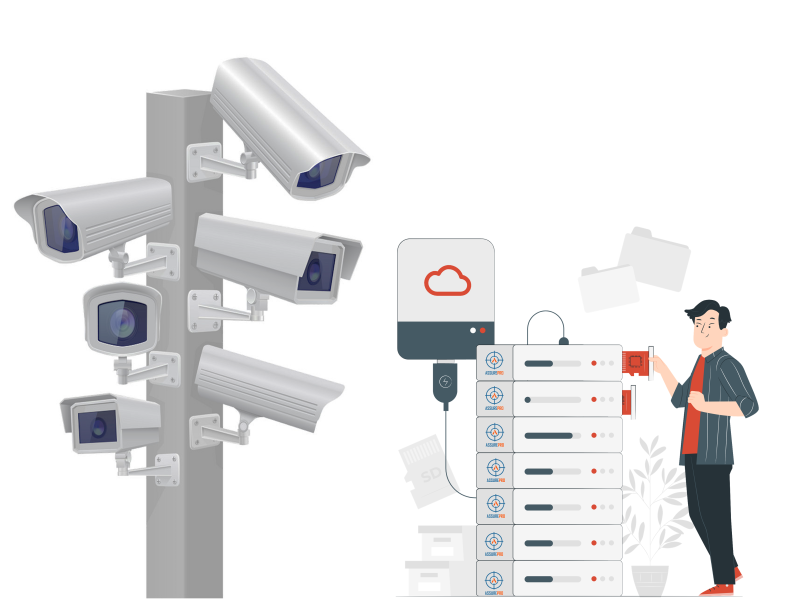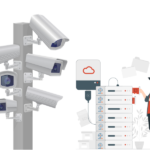Closed Circuit Television (CCTV) systems are now called video surveillance/ monitoring systems as closed circuits are no more used in today’s cameras. It has become an indispensable tool in ensuring security and surveillance in public spaces and private premises. The footage captured by CCTV cameras is not only used to monitor activities but also serves as a crucial piece of evidence in investigations and legal proceedings. However, the effectiveness of CCTV systems is dependent on the quality and management of the storage of the footage.
Let’s discuss the importance of CCTV system storage management, its benefits, and the best practices for effective storage management.
CCTV system storage management refers to the process of efficiently storing, managing and accessing CCTV footage. It involves several key components, including the storage media, data backup, archiving, retrieval, and access control. Effective storage management ensures that CCTV footage is securely stored, readily accessible, and reliable in terms of quality.
Security and Crime Prevention
CCTV cameras act as a powerful deterrent to criminal activities. However, in the event of an incident, the footage captured by the CCTV system is crucial in identifying the perpetrator and providing evidence for legal proceedings. Effective storage management ensures that the footage is retained for an adequate period, is easily accessible, and maintains its quality, enabling law enforcement agencies to use it effectively.
Compliance and Legal Obligations
In many countries, CCTV footage is subject to data protection and privacy regulations. Organizations and businesses that use CCTV systems must comply with these regulations, which include the proper storage and management of the footage. Failure to comply with these regulations can result in fines, legal action, or reputational damage. Effective CCTV system storage management ensures compliance with data protection laws and legal obligations.
Operational Efficiency
CCTV footage is used for security and surveillance and operational purposes such as monitoring production processes, traffic control, and employee activities. Effective CCTV system storage management ensures that the footage is readily accessible, enabling quick decision-making and enhancing operational efficiency.
Cost-Effective
Effective CCTV system storage management reduces the cost of storage and retrieval. By optimizing storage capacity and automating backup and archiving processes, organizations can reduce the need for manual intervention and minimize the risk of data loss, which can be costly.
Business Intelligence
CCTV footage can provide valuable insights into customer behavior, buying patterns, and preferences. Effective storage management ensures that this footage is readily accessible, enabling businesses to use it to make informed decisions, optimize processes, and improve customer experience.
Some Best Practices for CCTV System Storage Management
- Determine Storage Requirements: The first step in effective CCTV system storage management is to determine the storage requirements. This involves assessing the amount of footage that needs to be stored, the retention period, and the quality requirements. This information is used to determine the storage media, backup, and archiving systems needed.
- Use High-Quality Storage Media: The quality of the storage media used has a significant impact on the reliability and accessibility of the footage. High-quality storage media such as solid-state drives (SSDs) and network-attached storage (NAS) devices provide faster access, higher reliability, and better data retention than traditional hard disk drives (HDDs).
- Implement Redundancy and Backup Systems: To ensure data integrity and minimize the risk of data loss, it is essential to implement redundancy and backup systems. This involves having multiple storage devices, backup servers, and a disaster recovery plan in place to ensure that data is not lost in the event of hardware failure, natural disasters, or cyber-attacks.
- Automate Archiving and Backup: Manual archiving and backup processes can be time-consuming and error-prone. To improve efficiency and minimize the risk of data loss, it is recommended to automate archiving and backup processes using software
- Configure your cameras properly: Properly configuring your cameras can help you minimize the amount of footage that needs to be stored. For example, you can set up motion detection to trigger recording only when there is movement in the frame.
- Use compression: Use compression techniques such as H.264 or H.265 to reduce the size of the video files without compromising on the quality.
- Set up alerts: Configure alerts to notify you when your storage is running low or there is a storage system problem.
- Regularly maintain your storage system: Regularly maintain your system to ensure it’s running optimally. This includes updating the firmware, cleaning the fans, and checking the temperature levels.
- Use a RAID system: A RAID system can help protect your data in case of a hard drive failure. RAID 1, 5, or 6 are good options for CCTV storage.
- Have a plan for emergencies: Have a plan in place for emergencies, such as power outages or natural disasters, to ensure the safety and integrity of the CCTV footage.




